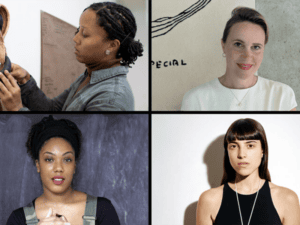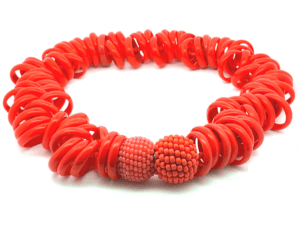Before written language or the spoken word, there was jewelry. Jewelry can be traced back to the very first humans and those humans came from Africa. The Martin and Osa Johnson Safari Museum is in an unlikely setting for a repository of information on ‘traditional’ peoples of Africa. The museum can be found far out on the southeastern Kansas prairie, in the historic town of Chanute and despite its name, this institution is not to be overlooked as a mere roadside tourist attraction.
The Johnsons were native Kansans – Martin from Independence and Osa from Chanute. They were household names in the 1920s and 1930s, internationally known for their daring adventures into the remotest regions of Africa and the Pacific islands. Their popular movies and books documented their travels and offered many Americans their first knowledge of what were then, distant, exotic lands.

The Safari Museum was formed posthumously to preserve the achievements of these explorers, naturalists, authors and groundbreaking filmmakers and to encourage further research into their life work in natural history and cultural anthropology. In 1974, an African ethnographic collection was established by Dr Pascal Imperato whose own work includes field studies of the art of the Bambara, Dogon and Peul peoples of Mali. His aim was to broaden public understanding of the Johnsons’ work and his collection represents various peoples of West and Central Africa. It consists of several hundred objects, including masks, headdresses, furnishings, personal accessories, tools, armaments, textiles and musical instruments and is the largest collection of West African art in the Midwest.
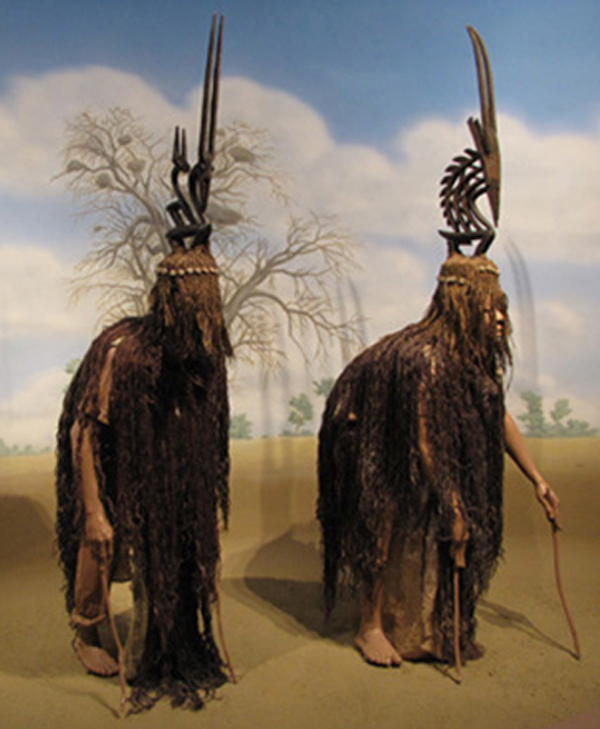
These works, as is most African art, are transformative. In them, the maker, the wearer and the function are completely interconnected. The works would have no meaning otherwise. In these “traditional” societies the body is central to all experience and the priest – or in our western interpretation, the shaman – through sanctified objects is the facilitator of that experience. The notion of artist as shaman, as guide to transformative experience is still very much a part of contemporary art making. I’m thinking here specifically of Nick Cave’s Soundsuits, but there are others.
The Imperato African gallery is a series of interwoven spaces cloaked in low, soft light. In the wall cases, perfectly lit objects are displayed against a turquoise backdrop that heightens their dynamic presence. It is an inviting space for contemplation and, if one allows, a space to project oneself into a different world.
It is unusual to find cases of jewelry included in an exhibit of African art, yet this museum recognizes the role of jewelry in African identity and expression. The jewelry, objects and selected photographs from the Johnson archives are brought together in the exhibition integrating material, function and design with cultural identity. Many of the pieces held in the museum’s collections were selected because they are the same masks and adornment that can be seen in the Johnsons’ films.
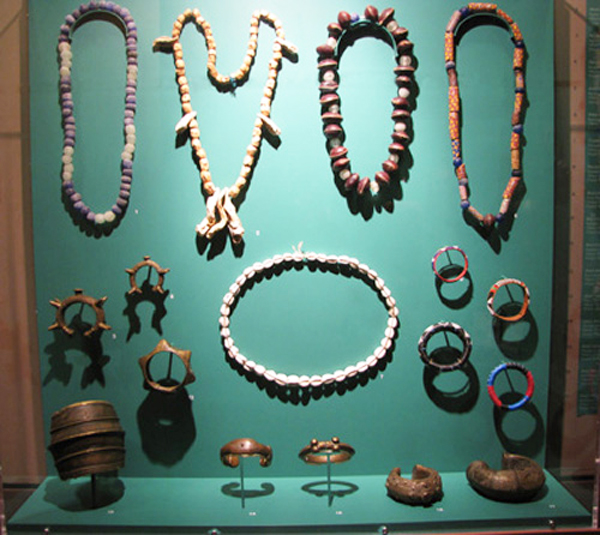
African jewelry has been used to adorn necks, ears, arms, legs, toes, hair and waists. It can be pierced, strapped and sewn on and sometimes left for long periods of time causing physical change and restricting movement, qualities viewed as attractive and as cultural identifiers.
The many forms of beaded African jewelry can express as much information as is written or spoken. The patterns, colors and shapes of the beaded adornments form a visual language that indicates the status, relative economic wealth, beliefs, family, accomplishments and life experiences of the wearer. In this context jewelry becomes a biography that can be read and a community standard that unites villages and peoples.
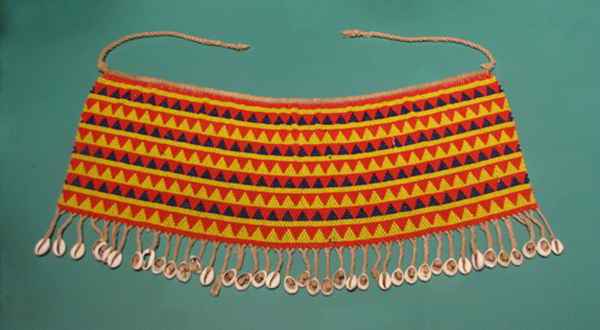
African ornament is typically created from readily available natural materials, with the exception of glass beads brought by traders, the earliest of which most likely originated from Egypt. These materials often carried symbolic meanings for the wearer. The Safari Museum’s jewelry collection contains representative examples of adornments using cowrie shells, seedpods, trade beads, teeth, bone, grass and elephant hair.
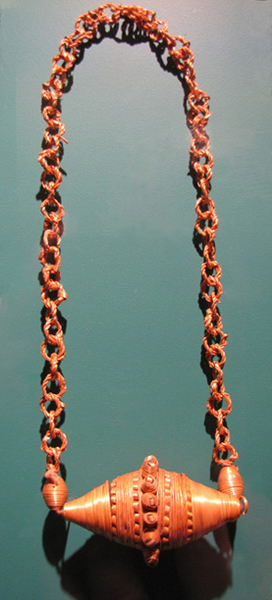
The large, intricately woven pieces of borgus grass from the Songhai peoples of present day Mali and Niger were the jewelry works I found most intriguing. Golden in color, the grass is woven into realistic imitations of the more familiar cast gold work of West Africa. Known as ‘Timbuktu gold,’ it is so realistic that at first glance it can easily be mistaken for its precious counterpart. These woven works fulfilled the need for ornament when gold was beyond a family’s means. The very poor would purchase this ‘imitation’ jewelry of grass and beeswax or of fired and painted clay.
Though the gold works are well documented, I was unfamiliar with the woven grass works and that prompted some research. I found a few minor but intriguing mentions of them in Oppi Untracht’s Jewelry Concepts and Technology and Garrard’s Gold of Africa. Untracht’s interest was in the potential for the weaving process in the contemporary jewelry being made at the time. Looking at the work now and viewed through the lens of the contemporary jeweler, connections and parallels can be made to current themes of reinterpretation, sustainable practice, questions of value and the notion of ‘imitation.’
The Safari Museum is an unexpected gem. Though modest in size, its collections are a visual feast of history and culture from a West Africa of the past. My only disappointment was with the lack of detailed information on design, material symbolism and purpose of the jewelry in the temporary exhibition. The museum though, does have a research library where one could further one’s interest in this and other subjects related to the collections. Such seminal texts as Africa Adorned by Angela Fisher, Gold of Africa by Timothy F. Garrard and African Beaded Art by John Pemberton III would be good places to begin.
The jewelry, masks and other objects in the museum’s galleries provide a moment to reflect on ornament, its origins, purpose and language and to reflect on cultures where ornament was integral to the society and to the individual. Cultures in which the identity of an individual and their ornamentation are so integrated they become one and the same.



